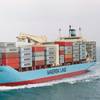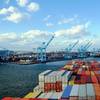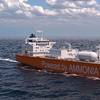Spanish Ship Repair On a Winning Streak
Strategically located Spain, linking countries in Europe, Africa and the Americas, along with a dynamic coast line dotted with number of highly proactive ports have bolstered its progress helping it to become a global leader in the ‘ship’ repairs and conversion. Spearheading the ship design and construction operations in Europe, the sector is witnessing an unusual boom with an annual volume of about €400 million. One can find 13 shipyards competing in this ship repair/conversion market. The smaller ones being able to repair vessels of up to 100 meters in length and the bigger ones – considered to be the biggest shipyards in Europe in terms of docking facilities – have dry docks that service vessels of up to 400 meters.
There are state-owned repair yards vying with number of private players attracting new cruise, passenger, ferry and gas shipping clients, while maintaining their traditional specialization in large fishing, oceanographic, research and military vessels.
On the one hand, the state owned group NAVANTIA, with three shipyards dedicated to repairs besides shipbuilding activity in their whole group, has been successful in cornering 50 percent of the above mentioned market, the rest being with the private operators. Among the private players, two shipyards Astican & Astander stand out prominently exclusively focusing on ship repairs and conversion have mushroomed in a short time to become the biggest private company in Spain, with more than 30 percent of the total turnover in the market.
Notably NAVANTIA is an EU leader accomplishing complex repairs on LNG carriers of all size as well as cruise vessels. It was NAVANTIA that docked in 2015 the cruise vessel Allure of the Seas which is presently deemed to be the largest such vessel in the world.
Astican shipyard on the other hand is strategically located in Port of Las Palmas on the crossroads of the Atlantic Ocean (Canary Islands, Spain) and is the Western African leader for Inspection, Repair, and Maintenance of all kind of vessels of up to 36,000 DWT besides upgrading, commissioning, and punch list work on shallow water and deepwater rigs. Whereas, Astander – based on the North Coast of Spain (Port of Santander) - is one of the major players in the ship conversion market within Spain enjoying a high value-added repair capability and prominent track record for seismic vessels, fish trawlers and seafood harvesting vessels, and Ro/Ro passenger ferries, among others.
What keeps private yards, Astican & Astander ahead of others, is its 135-year experience, backed by shareholders from the shipping industry with experience as shipowners have set out the key corporate values that any shipping industry customer wishes to see in a good shipyard and the location in two geographically differentiated Spanish regions targeting two clearly differentiated shipping markets which allow them to handle a very well diversified portfolio of clients and projects. Their outstanding reputation in executing heavy tasks on complex repair and conversion projects as well as in meeting strict delivery schedules has earned them worldwide reputation.
On a conservative note Germán Carlos Suárez Calvo, CEO of Astican & Astander Shipyards contends, “Although 40 or 50 years ago Spain and other European countries were top of the list in shipbuilding, I would not say that the Spanish Maritime sector leads the world in ship design and construction as ship construction and design are clearly led by China and Korea. Europe barely gets 10 percent on an average, of the world orders and amongst the European countries Spain could be one of the top 10 countries in terms of construction. Because of Astican shipyard’s strategic location that Spain can easily be said to be the western Africa’s ship repair hub.”
He goes on to explain that the type of shipyards as the ones they run currently had to adapt during the eighties and the nineties by evolving themselves into the so called “synthesis shipyards,” where the shipyard itself acts as a leading main contractor which promotes, manages and coordinates a bunch of small and medium sized highly specialized third party contractors who regularly work for the shipyard as much as many of them happened to even move their workshops and production facilities nearer to the shipyard.
“We are now in the process of setting up new business lines that where unthinkable some years ago,” Calvo said. “We are also signing strategic alliances with major players in the industry and service providers to turn our yards into a one-stop-shop yard, offering even logistics services and adapting our facilities to accommodate complex equipments to be maintained by OEMs. The opening ceremony held in one of our premises on 5th of November in 2015 of the third and the largest Rolls Royce Service center in the world right now to do overhauling of big thrusters and other equipment on their marine division gives a clear view of the kind of added value we are looking for.”
Nils-Reidar Olsvik Valle, Service Center Manager of Rolls-Royce Marine España, which recently set base, points out that Las Palmas’ position in the Atlantic allows Rolls-Royce and Astican to enhance its support to rig and drillship owners undertaking ongoing exploration, production and development operations in Europe, Africa and the Americas. “The center also services future growth in the offshore supply and service market as well as the fisheries sector,” he said. “The alternatives and different options provided by government and local companies have been helpful to ensure that this is an important and correct investment and also for the possibility to future growth. The safety and security of operating in the EU means that there are no surprises when it comes to regulations and policies. The logistics and transportation possibilities for personnel, equipment and spare parts are an important factor in this kind of business. We cannot have delays or unexpected problems during our service.”
Rolls Royce sees Spain to be one of the major hubs of offshore repair as it is able to service customers operating in South America, Europe and West Africa. When their workshop is fully up and running, it will have 10 full time employees working with Astican and customers to deliver top notch service. Like all their service centers, Rolls Royce is positioned to grow in the location subject to demand.
Spain only accounts for 10 percent of the total EU market share because it is currently existing in Europe’s more than 90 shipyards dedicated to the ship repair and conversion market where125,000 workers are directly or indirectly involved and where 28,000 of them are direct employees whose work production accounts for more than €3.5 billion total turnover compared to €400 million in Spain. New challenges continue to plague the repair industry with the low oil prices forcing the oil and gas industry to absorb a lot of changes. When the going gets tough, players have to consider various drastic measures to keep afloat.
“Nowadays we are entitled to share cost savings with our clients being more productive while getting shorter delivery time on the projects where information technology tools provide us better results, Calvo said. “Moreover, complex vessel conversions normally require state-of-the-art equipment to be handled or manufactured depending if the finally delivered vessel is a highly sophisticated project as the one we carried out this year for the Canadian listed company Clearwater Seafoods’ “Belle Carnell”, the only one of its kind Seafood Harvesting vessel in the world. Only employing well trained people and using proper technologies, make you succeed in meeting your customer needs, on time.”
On top of all this, the industry has to meet up with other obligations such as environment protection and new convention coming in. It is here that R&D has helped to adapt new techniques to meet today’s shipping industry enquiries from clients who look for environment-friendly shipyards as a place to get their projects carried out as well as a contractor capable of delivering emission-reduction solutions in compliance with incoming IMO regulations.
(As published in the January 2016 edition of Maritime Reporter & Engineering News - http://magazines.marinelink.com/Magazines/MaritimeReporter)












